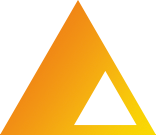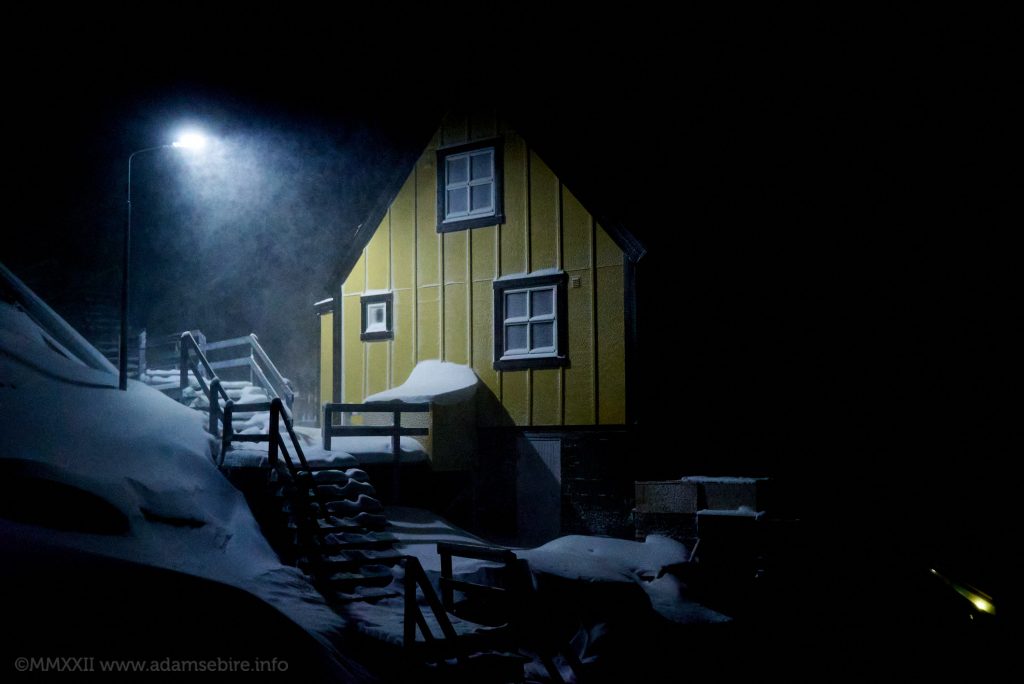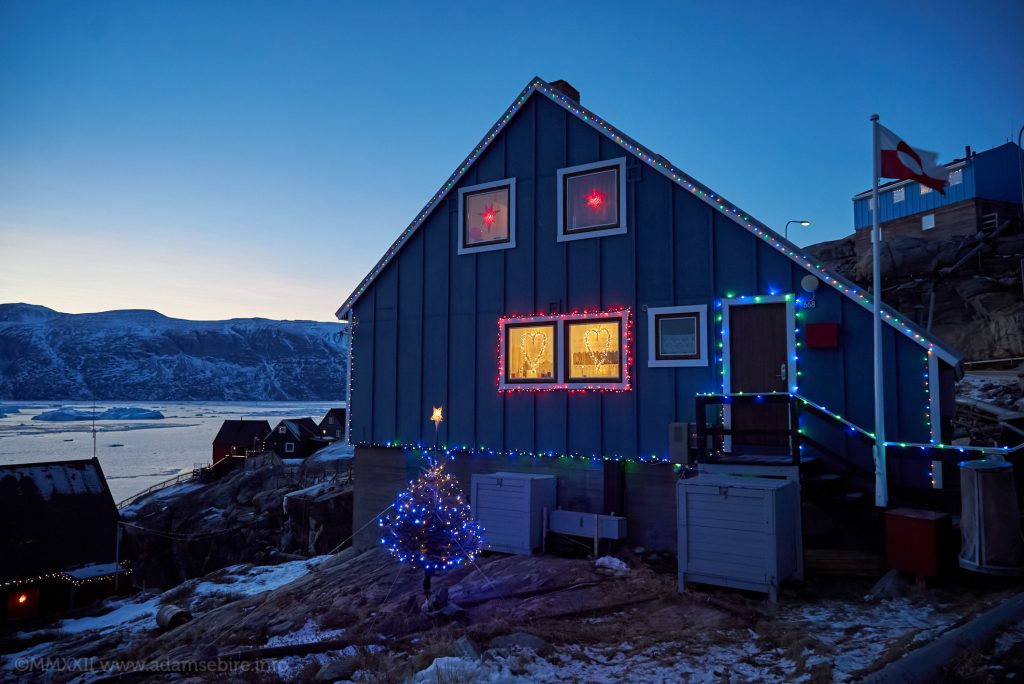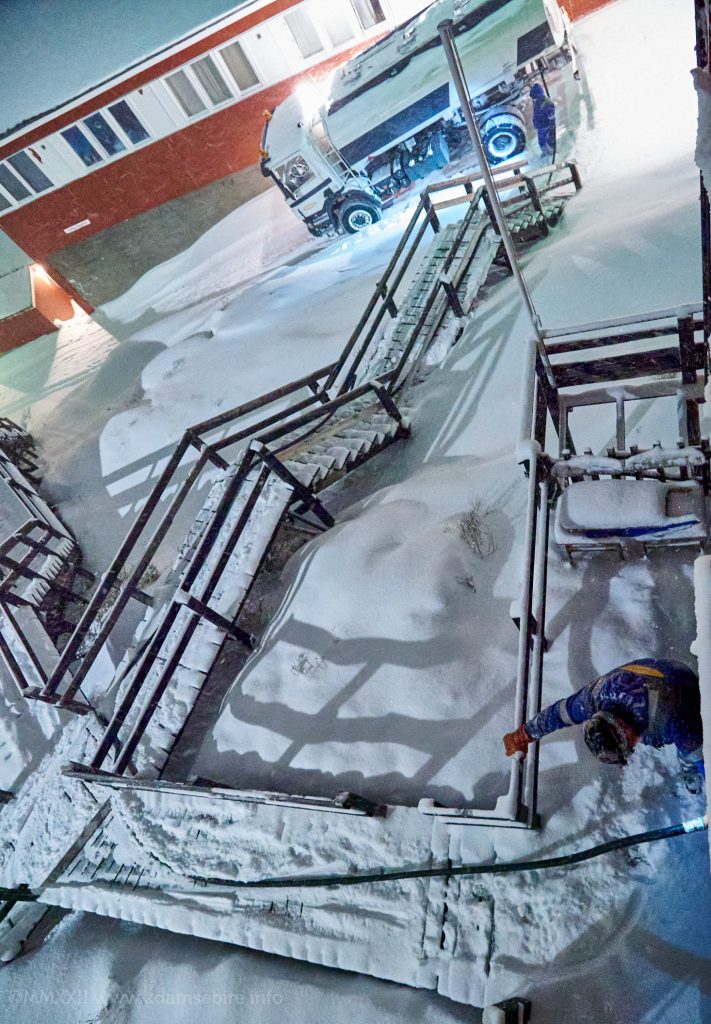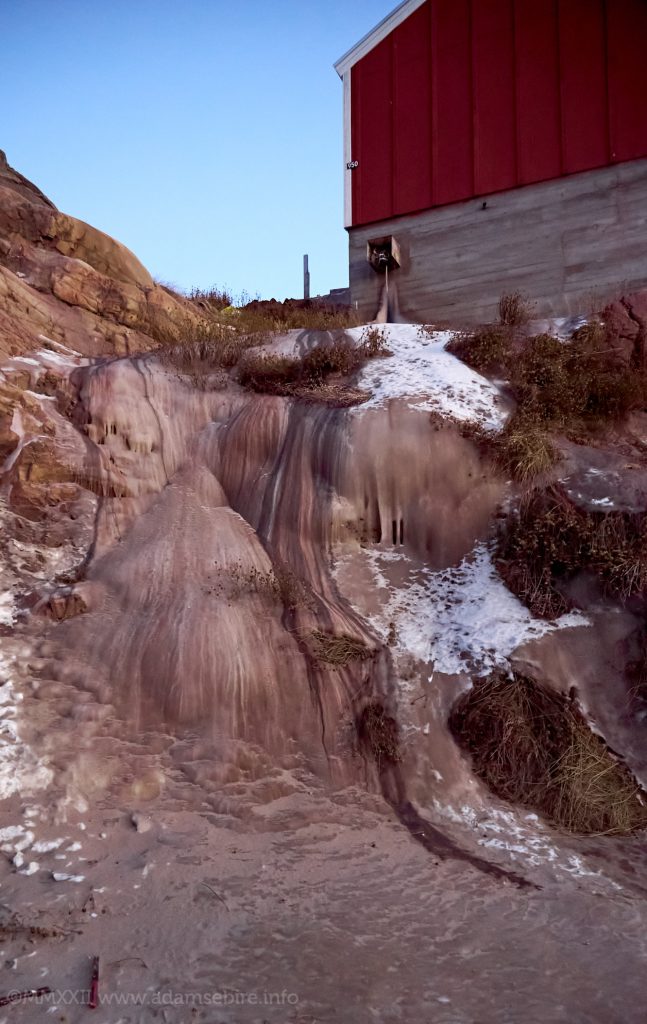Erik the Red, a Viking, named this frozen island “Greenland” around 982CE — to attract settlers, so say the Sagas — thereby also becoming a pioneer of panglossian real estate hype.
Whilst you might assume the “Green-” bit was “fake news” (to borrow the term from a guy who tried to purchase Greenland in 2019), ice core data suggests that the southwest part of the landform’s climate was in a warm cycle till 1250, offering seasonally green land suitable for agriculture as far northwest as present-day Nuuk till about 1360. (And again today, as farming expands in south Greenland — only this time it’s extremely rapid warming driven by anthropogenic greenhouse gas emissions.)
Greenlandic people, the indigenous Inuit or Kalaallit, don’t call it “Greenland” of course, nor even the Danish “Grønland”; Kalaallit Nunaat is its name in the West Greenlandic language, Kalaallisut. Yet the first thing that attracts one’s eye about a Greenlandic settlement is its bright colours: its building facades. This is especially true if one arrives on Uummannaq in winter when the granite and grasses clinging precariously to it is covered in snow. The whiteout becomes complete if the fjord has sea ice. Partly functional, but certainly offering visual relief, the building colour code system introduced during the Danish colonial era (which ended in 1953) is by-and-large still observed.
My red house with its snakes-and-ladders wooden staircases would have denoted a school or church building (or accommodation for their employees):
Green houses were for the technical trades:
Yellow was health care:
Blue related to the fisheries:
And black was police.
However the system is no longer compulsory and, like the icebergs, white, unpainted and even striped buildings are now acceptable.
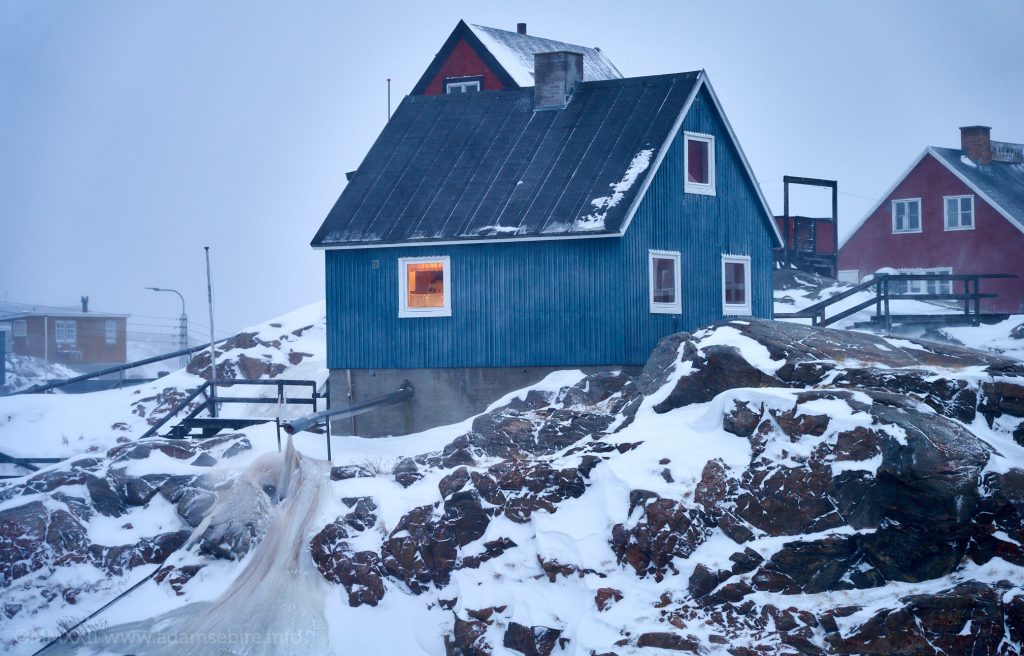
Tiny wooden houses clinging to rocky outcrops might look like prototypes from an off-grid alternative lifestyle feed on Instagram, but in reality most are cramped with their intergenerational occupants navigating precipitous ladder-like stairs to an upstairs sleeping area with great deal of space occupied by a boiler running on oil (delivered by tanker to each house), a large water tank (filled weekly, by another tanker), and boasting a toilet which, owing to the lack of plumbing in this freezing, rocky environment, comprises a black garbage bag topped by a toilet seat and collected every few days from your front door. You don’t want to get a hole in this bag. Other waste water pours out forming some extraordinary sights, tourist attractions in themselves:
 My house had a Finnish-designed electric incinerator toilet, disconcertingly called the “Cinderella Comfort”. This might be a low-emissions option in nuclear-powered Finland, but was more probelmatic here. Attempts had been made to put solar panels atop houses in a new section of Uummannaq created in 2017 after a landslide tsunami destroyed nearby settlements. But those attempts failed over a dispute about who owned the roofs, and today only the sports hall has solar panels. Consequently Uummannaq’s energy supply remains almost entirely diesel and “flushing” averages about as much energy as a half hour dishwasher cycle to turn waste into ash.
My house had a Finnish-designed electric incinerator toilet, disconcertingly called the “Cinderella Comfort”. This might be a low-emissions option in nuclear-powered Finland, but was more probelmatic here. Attempts had been made to put solar panels atop houses in a new section of Uummannaq created in 2017 after a landslide tsunami destroyed nearby settlements. But those attempts failed over a dispute about who owned the roofs, and today only the sports hall has solar panels. Consequently Uummannaq’s energy supply remains almost entirely diesel and “flushing” averages about as much energy as a half hour dishwasher cycle to turn waste into ash.
Never has there been such a good argument for holding it in.
